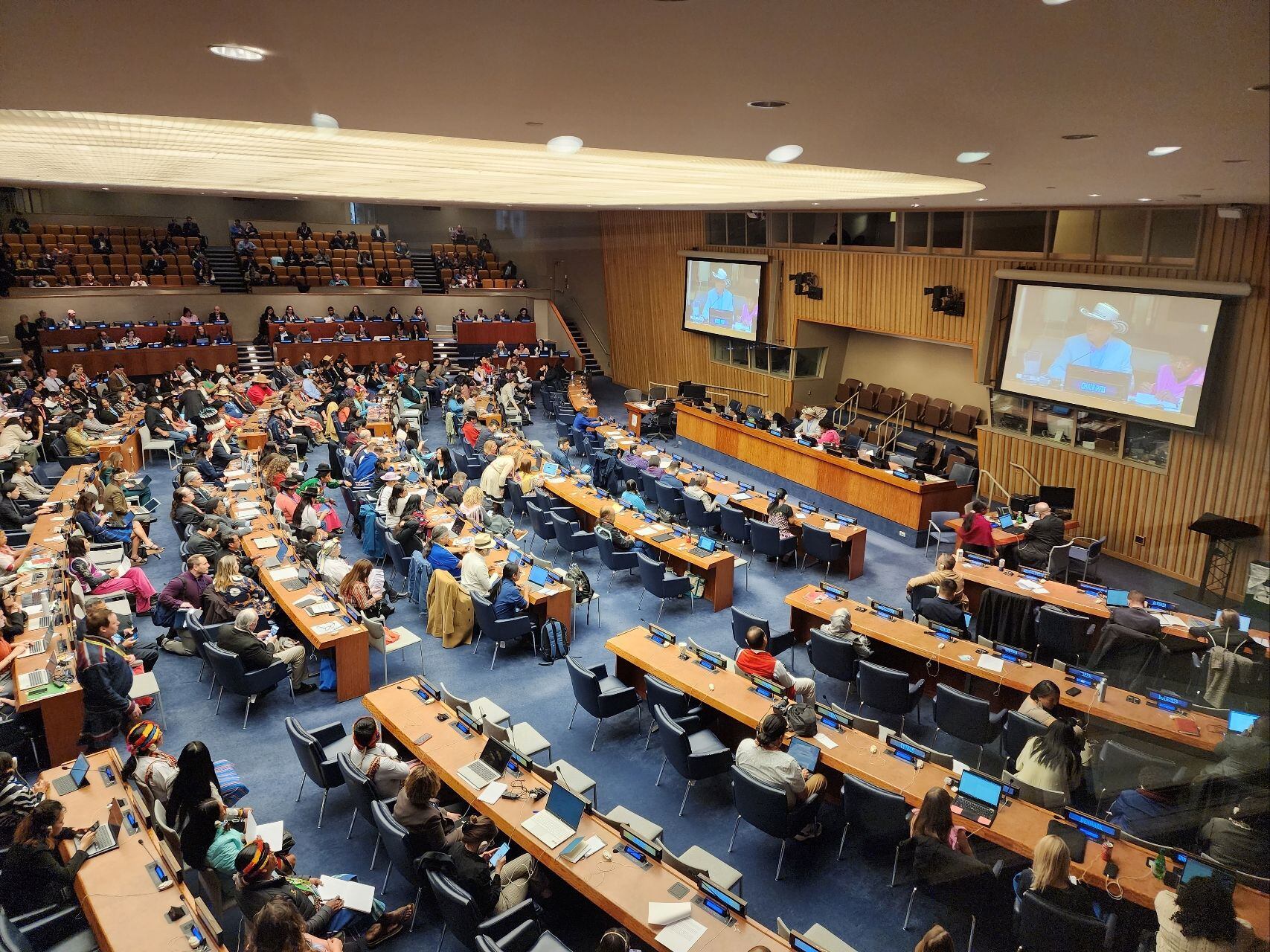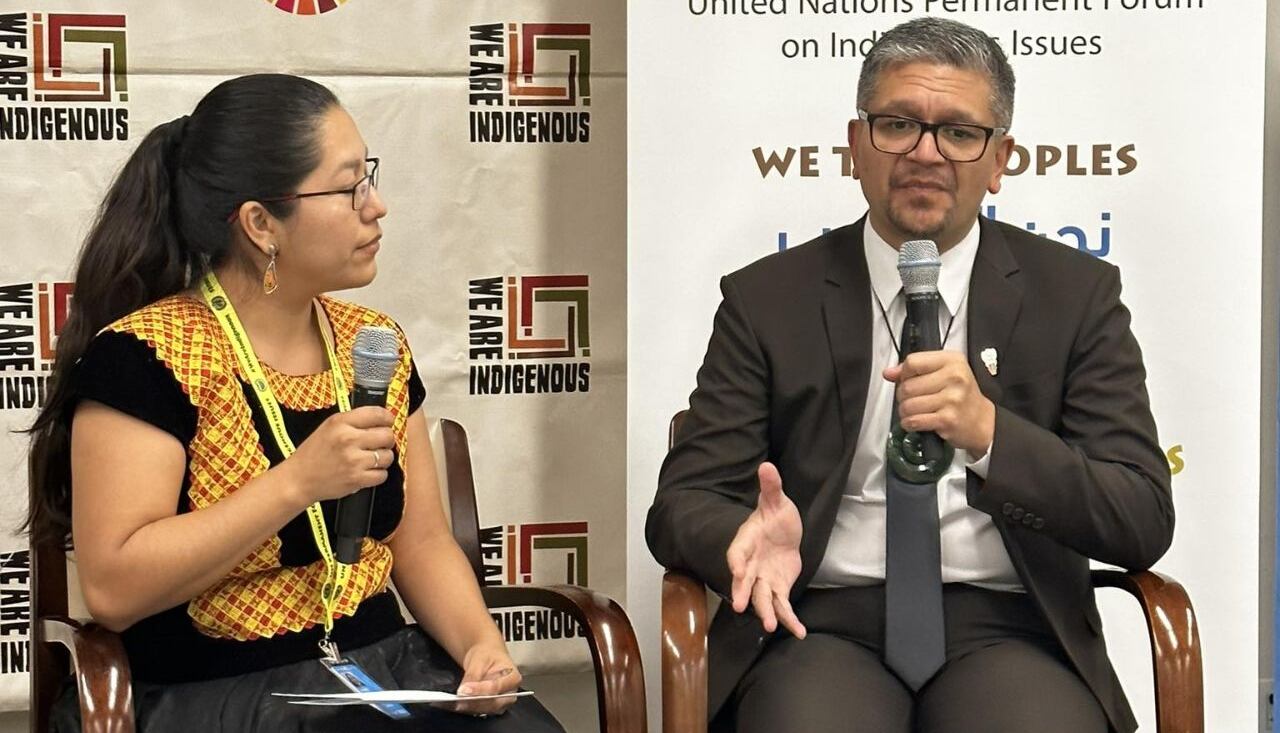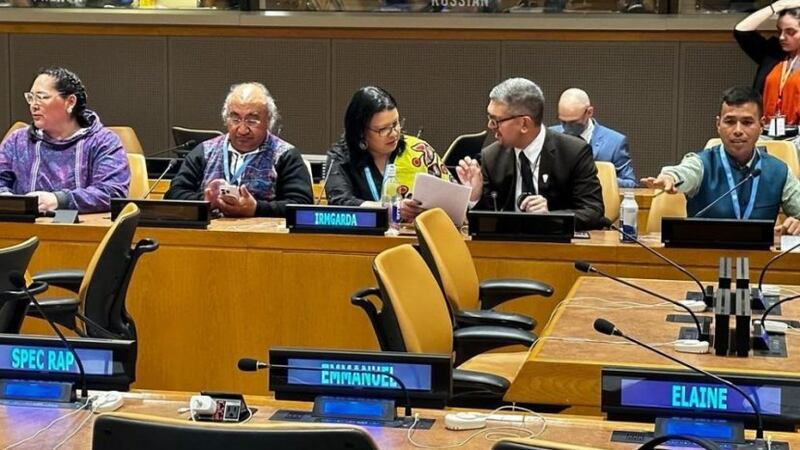Delegates discuss opportunities and solutions to challenges facing the indigenous media sector, at the United Nations in New York. Photo / Supplied
Indigenous media from around the world have gathered at the United Nations to share experiences and strategise joint responses to the threats and opportunities facing their organisations, and people.
Canadian delegates, Whakaata Māori and the Native American Journalists Association co-hosted the event with the United Nations Educational, Scientific and Cultural Organization (Unesco).
“Despite opportunities, in general, Indigenous media broadcasters face multiple challenges,” Whakaata Māori Tāhuhu Rangapū (CEO) Shane Taurima said at the UN headquarters in New York.
“These include competition from commercial broadcasters, the rapid pace of transition from analogue to digital media and operations in the digital market and reduced financial and human resources.”
The event emphasized the significance of media in promoting the rights of Indigenous Peoples, in line with Article 16 of the United Nations Declaration on the Rights of Indigenous Peoples (UNDRIP).

Indigenous media professionals gather to wānanga opportunities as well as solutions to problems facing the sector, at the United Nations in New York. Photo / Supplied
The article recognises the right of indigenous peoples to establish their own media in their own languages and to access all forms of non-indigenous media without discrimination.
“Media professionals from Asia-Pacific, Latin America, North America and Europe shared their experiences in creating an enabling environment and conditions for the development of indigenous community media,” Taurima said.
Whakaata Māori was doubling down on operating as an indigenous organisation, Taurima told delegates, rather than producing indigenous content, through a colonial lens.

Whakaata Māori tāhuhu arngapū (CEO) Shane Taurima discussing the opportunities for Indigenous Media at a UN summit in New York. Photo / Supplied
“Whakaata Māori is working actively to not just to bring language and culture to our screens but also to ensure that our language and culture is embedded in everything that we do. On-screen, behind the screen, in front of the mic, behind the mic, in everything that we possibly can do.”
Recommendations from the conference will be produced for the United Nations Permanent Forum on Indigenous Issues (UNPFII), but Taurima said he was increasingly optimistic about the possibilities organisations had in working together in collectives, such as the World Indigenous Television Broadcasters Network (WITBN), which has some 20 member stations from 12 countries.
“There's real value in driving long-term change for Indigenous media through UN channels. However, there's an opportunity for us to come together through networks like WITBN where we are making progress through content and knowledge sharing and soon staff exchanges,” he said.


